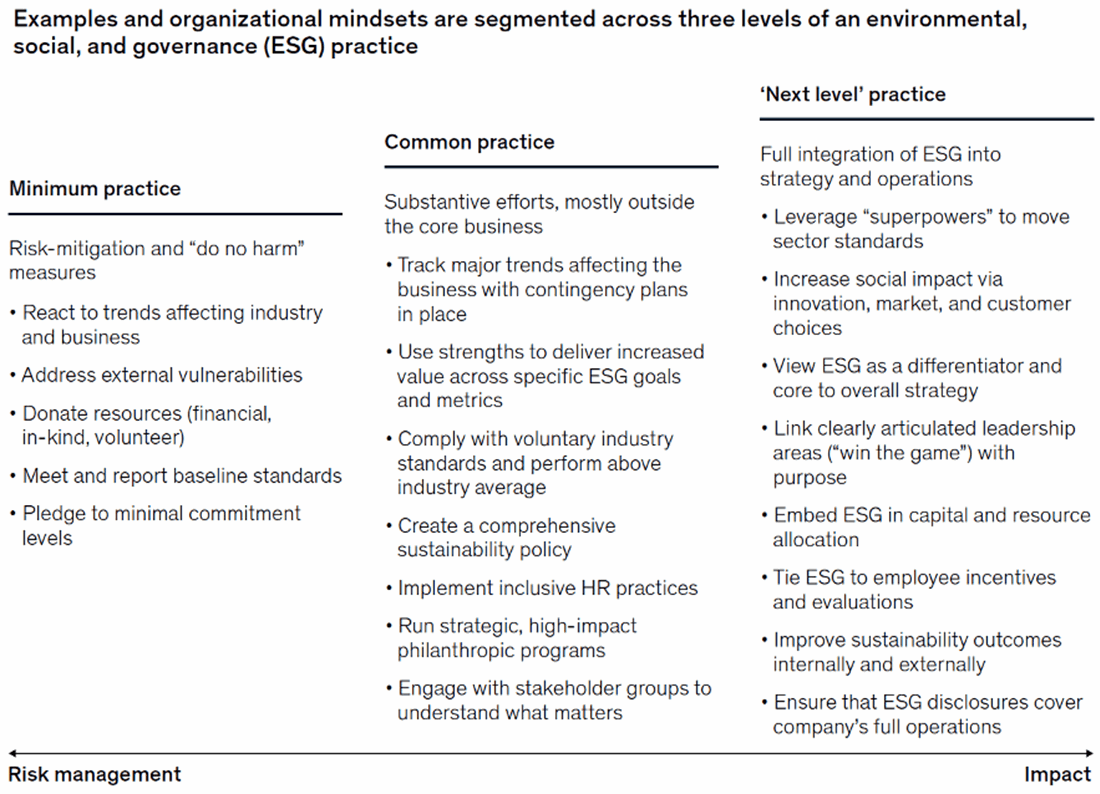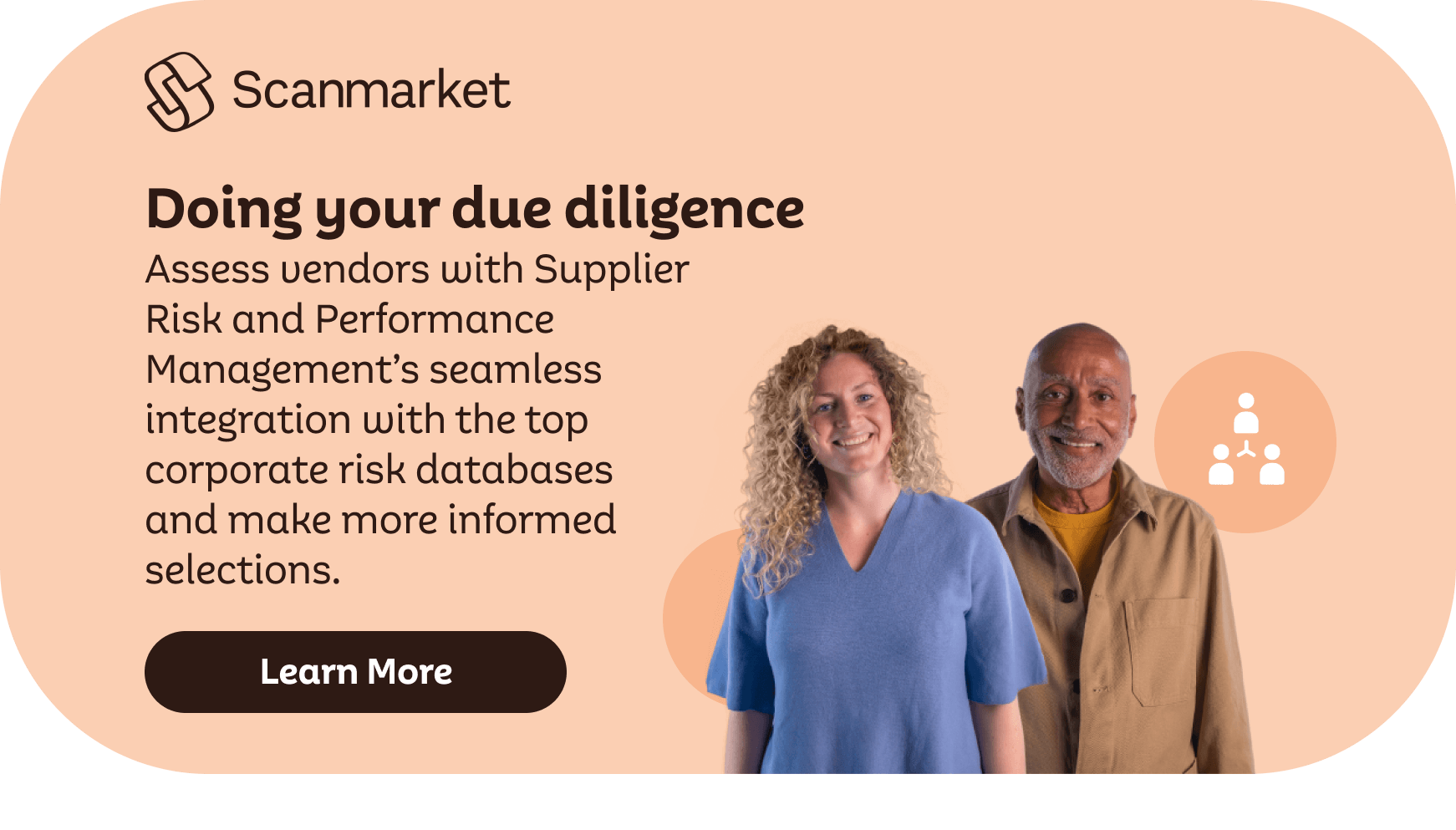There is a wealth of information and new regulations to understand when it comes to Environmental, Social and Governance (ESG), so the process of starting, assimilating, and determining the approach for your organisation when it comes to implementing any changes to your supply chain and procurement practices can be complex and often overwhelming. However, it does not have to be difficult to consider and integrate an ESG framework into your future business strategies, especially with adoption of current software platforms.
Introduction to ESG
Created to ensure responsible investment, ESG is simply a set of standards or principles which are used to help businesses evaluate their impact and sustainability, especially in relation to sourcing and procurement. These Principles for Responsible Investment (PRI) are often signed up to by institutional investors and are as follows:
- Principle 1:We will incorporate ESG issues into investment analysis and decision-making processes.
- Principle 2: We will be active owners and incorporate ESG issues into our ownership policies and practices.
- Principle 3: We will seek appropriate disclosure on ESG issues by the entities in which we invest.
- Principle 4:We will promote acceptance and implementation of the principles within the investment industry.
- Principle 5: We will work together to enhance our effectiveness in implementing the principles.
- Principle 6:We will each report on our activities and progress towards implementing the principles.
Accordingly, this then flows down into the way businesses conduct business and procure, source and contract manage all aspects of the procurement and supply chain lifecycle. Consequently, as of 2022 more than 90% of S&P 500 companies publish ESG reports in some form or another and the FTSE4Good index exists in the UK. Further, the Securities and Exchange Commission (SEC) is considering new rules that would require more detailed disclosure of climate-related risks and greenhouse-gas (GHG) emissions 1, other aspects are also pending too 2. Further, indirect legislation such as the German SCDDA (LkSG) and US CHIPS & Science act (August 2022) drives the need for effective ESG adoption by all sectors.
Understanding ESG and Your Business
The rising scrutiny of ESG factors means that procurement and supply chain management professionals need to ensure that this practice is now part of the day job and not a bolt on to simply consider cost as the only evaluation factor. In fact, those still pursuing a cost only approach will have already suffered during the worst of covid-19 and fall out from the Ukraine-Russian conflict as a consequence of severe disruptions to their supply chains.
Effective ESG adoption by all sectors means that the dynamics, selections, and approaches to constructing and sourcing supply chains for now and in the future will change. Tangential to this is the incorporation of sustainability, cyber security and of course the aspect of social value as a societal imperative.
At a pragmatic level we don’t have all the answers to ameliorate the effects of aspects of environmental correction, carbon reduction, recycling solutions, etc. However, one thing is certain, every business has a collective role to play, and we can’t wait for a fully developed solution to be in place before we start. The recognised fact is that certain technologies and solutions we need may take up to 10 years to develop, however, the impact enterprise can have by starting to integrate ESG practices in their business is significant and the intersection catalysts of this sit with procurement and supply chain management. Thankfully, there are many sourcing software solutions that can help and understanding where you currently are as an organisation is a key starting point.

Financial Implications of ESG
The reality is that comprehensively embracing ESG challenges our critical thinking when considering all the fundamentals of ensuring continuity and profitability of an enterprise. In fact, many pieces of research and analysis have sought to understand and validate the link between effective ESG performance and the fiscal performance of enterprises. Recent research and reports do support the fact that an effective ESG framework does lead to better fiscal performance.
Using the findings from a paper in the Journal of Investing (April 2022) entitled “Honey I shrunk the ESG alpha: Risk adjusting ESG portfolio returns” where the research concluded:
Concerning ESG strategies, our findings question a widespread practice of using ESG as an alpha signal. They do not question the value-added of such strategies on other dimensions. Investors should ask how ESG strategies can help them to achieve objectives other than alpha, such as aligning investments with their values and norms, making a positive social impact, and reducing climate or litigation risk” shows that the additive impact of adopting good ESG practices can be a positive one when it comes to the bottom line.
Key Considerations
When considering the “how” to set about structuring an effective ESG approach, there are several key points to evaluate:
Clarity of the Scope of Operations and Organisational Control
- Sector based and clarity of this
- Are they a holding company?
- Where are the resources based and drawn from within the supply chain?
- What is the stated legal jurisdiction?
Sphere of Operation Directly and Indirectly
- Extent of outsourcing or contracted activity
- How can they be benchmarked against the TPI index (https://www.transparency.org/en/cpi/2021 )
- Asset holding
Board and Shareholder Composition
- Who are the board and NED members
- What are the collective experiences in relation to ESG, sustainability, Social Value?
Sponsorship and Ownership
- Is this clear on the website, reports, and statements
- Ensure this is not passive or delegated
Transparency and Controls
- Do you have all the necessary publicly available codes of conduct for suppliers, policies, and procedures to effectively operate?
- Whistle blowing in place
- Is information easy to find and gather about how suppliers operate?
Reporting and Disclosure
- Are they reporting under the PRI principles?
- Are they part of the FTSE4Good?
- How comprehensive are the annual statements
- Do they have reporting and/or filing gaps?
- Are they registered on the Social Value Portal (https://socialvalueportal.com/ )
Regulatory, Tax, and Legal Framework
- Do any suppliers have any judgments or outstanding actions in this area?
- Do their contracts seek to deliver mutuality or are they “one sided” or biased?
- Are the tax affairs ascribed to their HQ or major sphere of operation and not offshored?
- Anti-Bribery & corruption observed
Audit Methodology
- Do they observe the principles of the Brydon report? https://assets.publishing.service.gov.uk/government/uploads/system/uploads/attachment_data/file/852960/brydon-review-final-report.pdf
Data: Collection, Storage, and Management
- Where is supplier data stored and hosted – both theirs and yours
- Approach to cyber security
- Digital maturity
- Clear lines of responsibility and escalation
Planning and Goal Setting
- Materiality matrix and roadmap
- Gap analysis
- ESG goals and timeframe
- Progress mapping and reporting
- KPI’s and cascaded metrics into the supply chain
Considering Materiality
A good way to consider a supplier, service provider or indeed your own organisation is to familiarise yourself with SASB materiality. (https://www.sasb.org/wp-content/uploads/2021/11/MMap-2021.png ). In essence this breaks down the elements of activity into a way that can be understood relative to the industry, organisation or supply chain, each of which will be unique and different for every enterprise. This can enable scenario planning and analysis of any material aspects that are applicable to your organisation, current and future suppliers and especially in regard to the management of risk.
There isn’t a single approach to materiality assessments and therefore your organisation will need to converge on an agreed approach based on key factors such as sector, complexity of supply chain and risk.
How to Implement ESG into Your Business
You may wish to seek help and support from external experts to ensure the plan is realistic and deliverable. Further, accept that some information or solutions don’t currently exist, and these will be developed over time. Recognise that some aspects of materiality will require deeper dives or subject matter experts to support too.
Determine where your boundaries and red flags are and be prepared to review, re-work and reconstruct supply chains accordingly. Agree your scoring criteria upfront as this will prove invaluable when challenged or need to have robust debates with stakeholders in the future. Using established tools such as NPV (Net Present Value), Risk and governance models, KYP (Know your Partner).
Using available source-to-contract software platforms such as Scanmarket, which can give you the necessary tools to successfully integrate ESG processes and best practices into your current business structure and strategies, without losing value, can be a key element for managing ESG.
There are some other pointers to consider, which a digital solution would also cover:
- Communication – from stakeholders to suppliers
- Training and compliance – Ensure your employees understand what you are trying to achieve, especially if implementing changes at a procedural level, and if integrating new software such as S2C or CLM, make sure they are easily adopted by the user
- Skill development
- SME support in the supply chain
- Use of visual information and videos
- Impact of social media
- Data privacy and storage – especially from a legal perspective
- What aspects are totally outside your sphere of influence
- Data integrity
- Building the digital ecosystem (& use of open API’s)
- Transparency - level of
As with any supply chain management, there needs to be accurate measurements and reporting in place to ensure compliance, profitability and the management and mitigation of risk. As ESG criteria can vary with industry and enterprise, procurement and supply chain management practices will be driven by specifics and as such, procurement and sourcing teams need to be pragmatic and flexible about which standards and measurements can be offered through the supply chain.
Conclusion
ESG is a complex topic that has variable ways to measure and evaluate. However, transparency and continuous engagement by the whole organisation and supply chain will ensure that it will evolve positively and contribute to shareholder and societal value. Finally, there is no “silver bullet” solution or “one-size fits all" approach. However, as we learn and share, the difference we can make will be evident.
References:
1 Release Nos. 33-11042, 34-94478, File No. S7-10-22, US Securities and Exchange Commission (SEC), March 21, 2022. The proposed rule would not come into effect until fiscal year 2023 and could face legal challenges; “We are not the Securities and Environment Commission—At least not yet,” statement of Commissioner Hester M. Peirce, SEC, March 21, 2022; Dan Papscun, “SEC’s climate proposal tees up test of ‘material’ info standard,” Bloomberg Law, March 23, 2022.
2 See “SEC response to climate and ESG risks and opportunities,” SEC, modified April 11, 2022; “SEC proposes to enhance disclosures by certain investment advisers and investment companies about ESG investment practices,” SEC press release, May 25, 2022.













